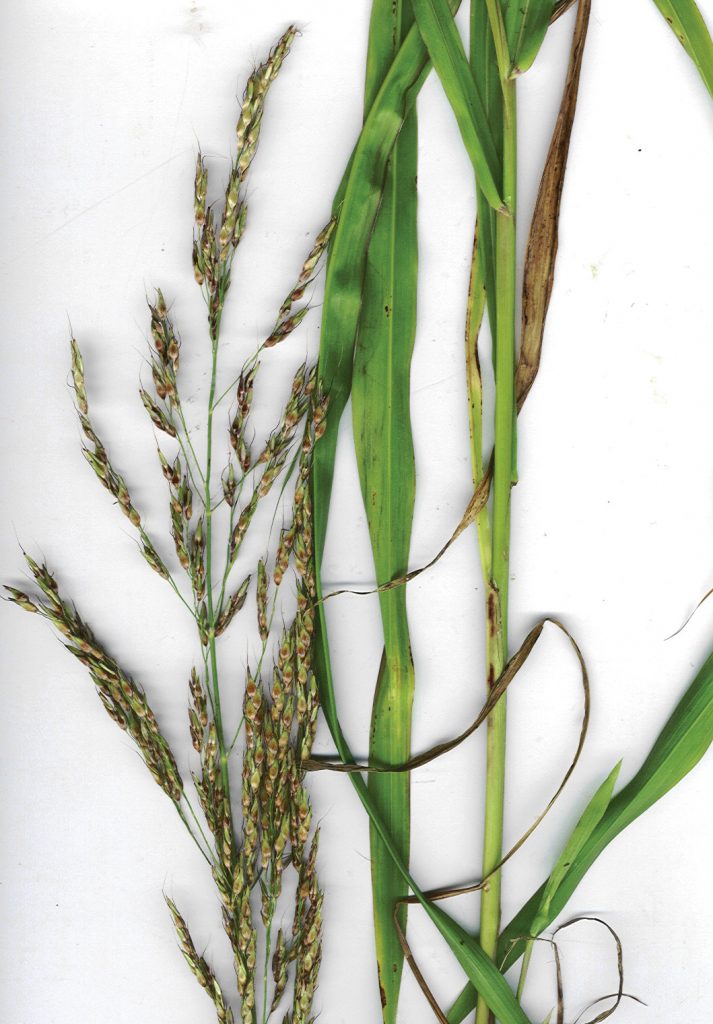
As the heat of summer soars and rain deminishes, producers should be mindful of prussic acid
In the heat of summer, Johnsongrass can pose some health risks to cattle and other livestock. Hot and dry conditions have the potential to create prussic acid poisoning in animals who consume Johnsongrass that is “stressed.” Producers should be aware of the potential risks when grazing Johnsongrass and know the signs of prussic acid poisoning.
Eldon Cole, livestock field specialist with the University of Missouri Extension, explained Johnsongrass, among a few other plants such as forage sorghum and sorghum sudangrass hybrids, can create prussic acid in toxic quantities in certain situations.
“The plants can accumulate the toxins when they’re in poor growing conditions such as drought stress,” he said. “Sometimes it happens if too much nitrogen has been applied or after frost, hail or herbicides have injured the plant.”
Signs of Prussic Acid Poisoning
Signs of prussic acid poisoning include increased respiratory rate and general distress, and if prussic acid levels are extremely high, producers may unfortunately find a dead animal. Cole noted in prussic acid poison cases, the animal’s blood will be a bright cherry red, whereas in cases of nitrate poisoning, the blood will be a chocolate color. Dry, cloudy weather can create excess nitrates in Johnsongrass.
Nitrate Poisoning Signs
Nitrate poisoning signs include increased respiratory rate, excessive salivation, impaired motor skills and in some cases, death.
Poisoning signs from grazing Johnsongrass with accumulated toxins will show up quickly. If producers are turning animals into a pasture containing potentially questionable Johnsongrass, observation is key.
“We do not have a highly-accurate field test that can be used to assess whether a pasture with Johnsongrass in it creates a risky situation for grazing animals,” Cole explained. “A crude method some use is to only turn lower-valued cattle in and watch them closely for 30 to 45 minutes.”
He suggested a veterinarian be alerted before opening the gate into a high-risk pasture.
If there are concerns regarding prussic acid and producers do not need to graze a particular section immediately. Jill Scheidt, agronomy field specialist with MU Extension, advised producers follow the “Rule of 2” when prussic acid is a concern.
“Wait two weeks or for 2-feet of growth following a frost or drought before grazing,” she said.
Following this rule gives the prussic acid levels time to decline. Scheidt and Cole noted prussic acid does not stay in the forage after it has been cut for hay. Excess nitrates, however, will continue to hang around in hay. A forage test can help determine if the nitrate levels are too high. A level of up to 4,400 parts per million (0.44 percent nitrate) will not typically cause any issues. Levels in the 4,400-4,800 ppm (0.44 to 0.88 percent nitrate) is usually acceptable for non-pregnant animals, but for pregnant ones, it is best to limit the nitrate containing forage to 50 percent of their diet. As nitrates increase, the risk rises and when the level is 1.5 percent or greater, it should not be fed to any class of livestock.
While producers do need to be aware of the risks of grazing Johnsongrass, it can still be utilized as a decent quality, highly palatable forage for livestock.
“Even though Johnsongrass has the potential for death loss, there are very few deaths recorded each year,” Cole explained. “Cattle seem to adapt to the forage if they are allowed to ‘grow up”’with the plant from early in the spring.”



